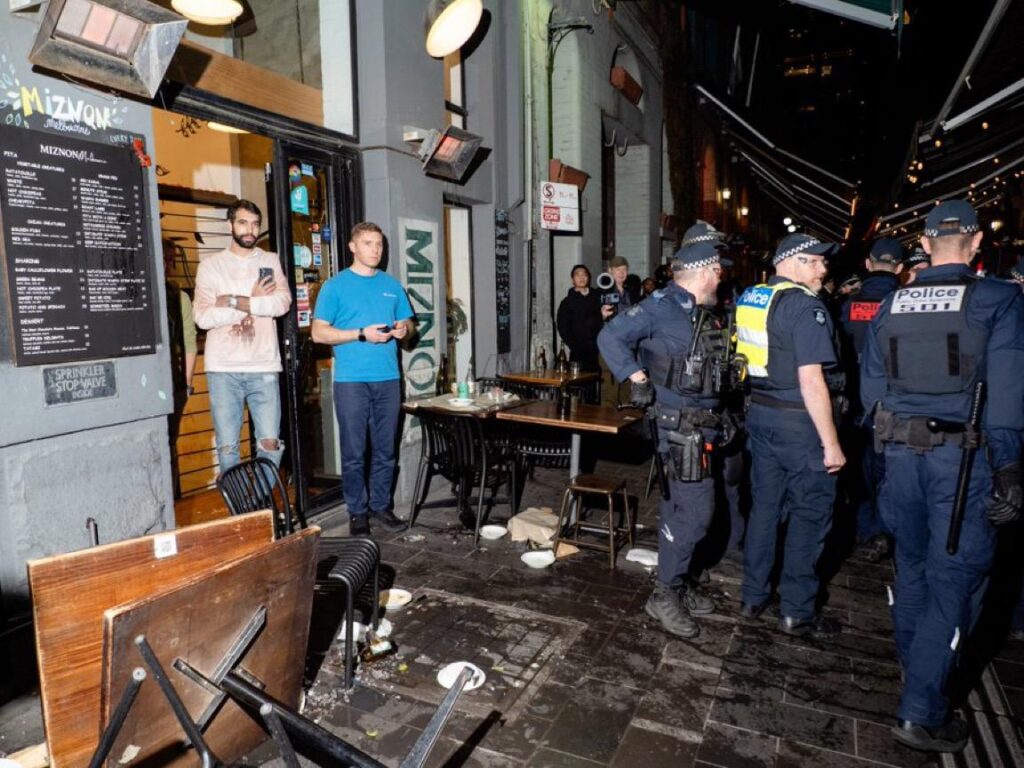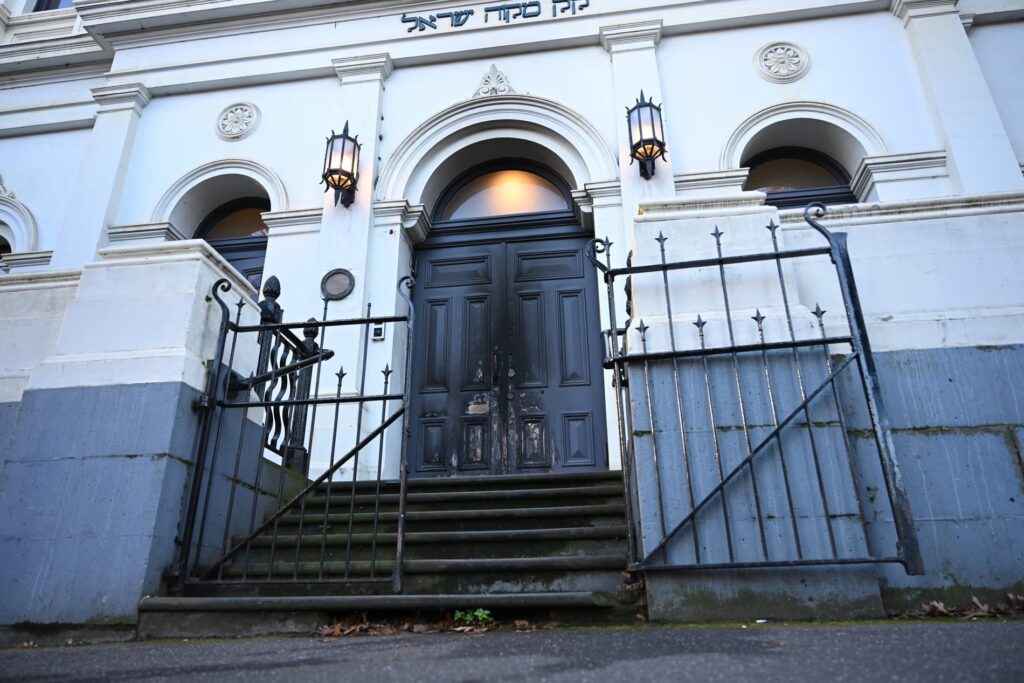IN THE MEDIA
The double survival gambit behind the brewing Israel-Hamas hostage deal
February 5, 2024 | Ran Porat

Lens (Monash University) – 5 February 2024
https://lens.monash.edu/2024/02/05/1386468/the-double-survival-gambit-behind-the-brewing-israel-hamas-hostage-deal
During the 7 October massacre, thousands of Hamas terrorists and other residents of the Gaza Strip invaded Israel, killing more than 1200 people in one day, and injuring thousands.
Many were tortured, sexually assaulted, raped and murdered, and more than 240 people were violently kidnapped from Israel into Gaza on that dark Saturday.
As of early February, about 100 Israelis are still in Hamas captivity, with an estimated further 30 having been killed, with Hamas retaining their bodies.
In response to the 7 October atrocities, Israel launched a war of an unprecedented scale on the terror organisation, leading to more than 25,000 Palestinians killed and more than 60,000 injured, according to the Hamas-run Gaza Health Ministry. More than a third of these victims are assumed to be militant combatants, but thousands of Palestinian women and children have also been killed as a result of Israel’s response, which has led to accusations of genocide.
Fleeing the battle zones, more than a million of the strip’s civilian residents are now concentrated on the southern border with Egypt as homeless refugees, facing a dire humanitarian crisis, with hunger and fear of major outbreaks of disease.
Israelis and Palestinians alike are now hoping and praying for a ceasefire deal.
An initial hostage deal in November resulted in the release of more than 100 hostages in exchange for a week-long pause in the fighting, the release of some 300 Palestinian prisoners, and increased aid to the Gazans. But the deal later collapsed and fighting resumed.
Months of painstaking negotiations, mediated by the US, Egypt and Qatar, have led to a new package deal that the two sides are now weighing up.
According to the suggested agreement, roughly 40 hostages – the remaining women and children, the injured, sick, elderly and female soldiers – will be freed first in exchange for a pause of a few weeks in the fighting, the release of hundreds of Palestinians from Israeli prisons, and an increase in humanitarian aid entering Gaza. Following this, the release of male soldiers and the rest of those kidnapped would be negotiated.
Two major issues stand in the way of finalising the latest deal:
- What will happen to Hamas afterwards?
- What will be the political fate of the current Netanyahu-led Israeli government in any such arrangement?
Hamas wants a complete end to the current war, and is demanding international guarantees that fighting would not resume after the deal is completed (unlike what happened in early December).
It offers a 10-year Hudna with Israel – Hudna being an Islamic term that means temporary truce with infidels (in 2003, Hamas offered Israel a similar 10-year Hudna, but it collapsed very soon after).
The terror organisation is desperately trying to remain on its feet, in line with the Palestinian idea of Sumoud (steadfastness), where not succumbing to Israel’s superior might is a victory in itself.
At the same time, tensions begin to flare within Hamas.
The commanders fighting Israel inside Gaza aspire to a quick truce to save themselves, alleviate somewhat the suffering of the 2.3 million Palestinians in the strip, and to regroup, restock and finally breathe fresh air outside the vast underground tunnel network.
The organisation’s leadership in Qatar insists on a more permanent ceasefire, while continuing to enjoy their lavish lifestyle.
Maintaining itself opens the door for Hamas to be integrated into a new, and hopefully reformed, Palestinian Authority (PA) that the US and leading Middle Eastern players, such as Egypt and the Saudis, wish to see in control of the strip when the current conflict finishes.
Hamas’ popularity in the West Bank has skyrocketed following the 7 October attack, and PA officials noted (or maybe warned) recently that they would allow Hamas to take over governance if the latter were to win an internal Palestinian election.
Israel’s Prime Minister, Benjamin Netanyahu, on the other hand, repeatedly clarified that his intention is for the Israeli army to continue its operations inside Gaza in various forms until Hamas is eliminated – a stated war aim.
Israel also aspires to achieve something that can be portrayed as a clear symbol of victory – most notably, the killing, removal, or expulsion of the Hamas leadership, including Yahya Sinwar, his brother Muhammad, and the much-mythologised Hamas military commander Muhammad Deif.
Which Palestinian prisoners will be released as part of the agreement is also important – specifically, whether it would include popular senior Fatah operative Marwan Barghouti, serving many life sentences for multiple killings during the Second Intifada at the beginning of the 2000s.
Barghouti is often mentioned as the leading candidate to take over the PA after current 88-year-old President Mahmoud Abbas finally departs after 20 years in office.
His release might change the balance of power between the two parties in the Palestinian camp in favour of Fatah, which signed the Oslo peace agreements with Israel in 1993, at the expense of Hamas.
From Israel’s point of view, the release of hundreds, or possibly even thousands, of other senior convicted terrorists from Hamas, Palestinian Islamic Jihad and Fatah as part of the deal amounts to a ticking time bomb.
A thousand prisoners, many of them with blood on their hands – including Sinwar – were set free from Israeli jails in a 2011 agreement for the release of Israeli soldier Gilad Shalit from Hamas’ hands.
Their release immediately reinvigorated Hamas ranks. No wonder polls suggest half of all Israelis oppose wholesale release of Palestinian prisoners as part of a deal, with some drawing a direct line between the Shalit deal and the 7 October attack.
Survival of Netanyahu
There should be no equivalence drawn between the aims of the terrorist group Hamas, responsible for the barbarism of 7 October, and Israeli PM Netanyahu and his loyalists who, love them or hate them, were democratically elected.
Yet the upcoming deal also risks positioning Netanyahu between a rock and a hard place – with his own survival as Israel’s leader and status as a free man, at stake.
Objections to the current framework of the deal come mostly from the right. Leading the opposing choir is the extreme ultra-nationalist politician Itamar Ben Gvir, and his Jewish Power (Otzmah Yehudit) party, who is threatening to take down the government if the agreement is approved.
On the other hand, Netanyahu also has to take into account the centrists Benny Gantz and Gadi Eisenkot (whose son was killed fighting in Gaza), both former IDF chiefs of staff who entered an emergency government with Netanyahu together with their party, National Unity, following 7 October.
The two may break up their partnership with Netanyahu if the deal is not accepted.
Opposition leader Yair Lapid, of the Yesh Atid party, has offered to support the deal as well, and join the government to get the hostage agreement passed if Ben Gvir and other right-wingers move to try to scrap it.
In the streets, a fierce campaign is being waged by the families of current and past hostages in Gaza, baring their immense pain and suffering to pressure the government to make sure their loved ones are brought home, whatever the cost.
Polls consistently predict a major defeat for Netanyahu’s Likud party if a new election is called, so the Prime Minister’s choices do not look good. He can either reject the deal in order to appeal to his right-wing base and likely stay in power for a time that way, but damage his later prospects; or embrace it (as he did in the Shalit case in 2011) to try to regain some public support.
Meanwhile, Netanyahu’s criminal trial, in which he faces three corruption-related indictments, and which opened in 2020, is still ongoing in Jerusalem.
Netanyahu’s critics accuse him of prolonging the war and delaying a definitive answer to the hostage deal to enable him to hold on to his role and remain out of jail, since it’s largely agreed “You do not remove a sitting PM during wartime”.
Netanyahu may also be seeking to delay the creation of an official commission of inquiry to investigate the failures that led to the 7 October massacre.
The PM will no doubt be one of the key witnesses to testify to the committee.
Many Israelis blame Netanyahu for his role in setting the policy vis-à-vis Gaza and Hamas during his cumulative 16-year run as PM since 1996, mentioning specifically his decision to allow Qatar to pay millions of dollars into Hamas-run Gaza to attempt to buy quiet.
In hindsight, it’s clear this money was used to rebuild Hamas’ military capabilities, and is a policy that turned deadly against Israel on 7 October, and since.
The next few days will likely determine the future of all the key actors in the conflict in Gaza.
There are high hopes a new hostage release deal can finally end the misery of the true victims of this war – the hundreds of thousands of civilians in Gaza and Israel, and the lonely and scared hostages and their families.





